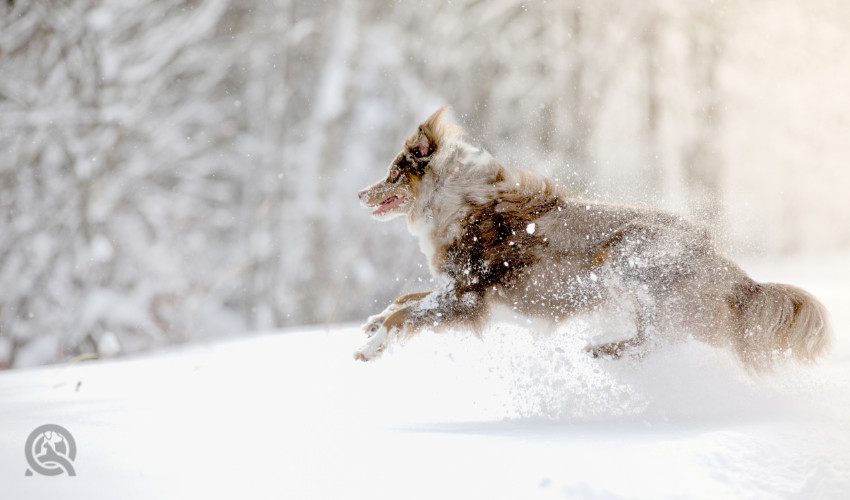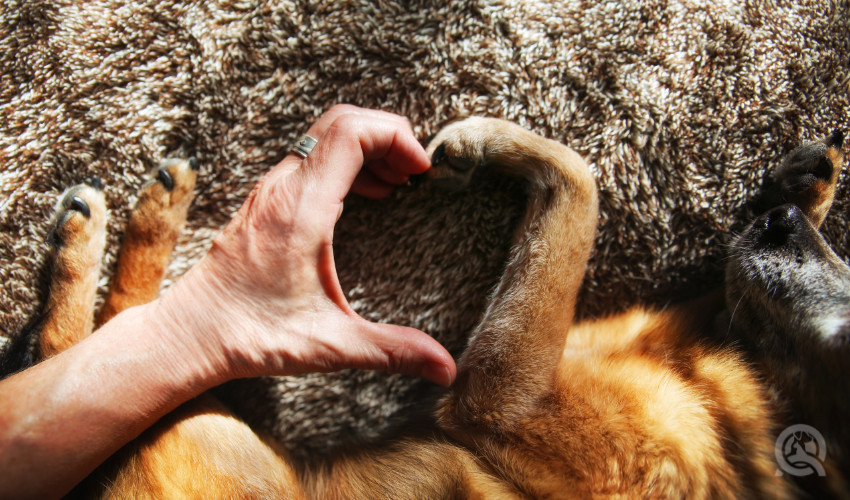For a dog groomer, the winter season means lots of visits from furry animals. Grooming a dog in the winter isn’t too different from grooming during other seasons, but the cold climate means there’s a few extra details to look out for. Being aware and knowledgeable will help you and your clients’ dogs stay comfortable and healthy all winter long!
For most dogs, winter grooming may just take a little longer than usual. But for others, there may be more pressing grooming issues to be mindful of. This all depends on the dog’s breed and lifestyle. A few preliminary questions about how a dog lives during the winter will help you make the best decision on how to groom a dog properly. Speak to your clients before you make any winter grooming decisions so everyone is happy and their dog remains healthy.
Keep these common winter grooming aspects in mind. There’s a few things you don’t want to overlook during the cold weather!

Paw checks
Road salt is a godsend for winter driving, but an absolute nightmare for a dog’s paws! Be sure clients check paws thoroughly after walks so no salt gets stuck between the dog’s toes. Salt will make a dog very uncomfortable and can cause further problems if not cleaned out properly; road salt can be sharp, and the last thing you want is for your pal to have a small bit of salt jamming into his paw. To avoid this, wipe down his paws after a walk or see if he’ll wear a pair of booties to cover the delicate paw pads.
Dry completely
Remember that old saying, “Don’t go outside with your hair wet”? Well you really shouldn’t, and neither should a dog. Wet hair in cold weather will make him cold and uncomfortable. Wet hair can also lead to hypothermia (just as it can in humans!). Whether you’ve just given your dog a bath or he’s been jumping around in the slush, make sure you dry his fur completely before letting him stay in the cold.
Brush carefully
With cold weather comes thicker fur, and that means more brushing than usual. Although many dogs stay inside most of the season, their bodies will sense the change of weather when they head outside for a walk. Dogs’ fur needs to be brushed to avoid mats and tangles. If your clients prefer to keep having their dog’s hair cut throughout the winter, just be sure that he’s warm enough when they take him outside. Investing in a dog coat and timing his outdoor activity will keep his temperature comfortable.
If a dog doesn’t have his hair trimmed, be aware of how often he’s being brushed. Longer fur can hide his skin even more than usual, so you need to be careful that there’s no skin concerns that hide away. Professional groomers are trained to watch out for ailments on a dog’s body and even a quick bath at the groomers can catch problems that otherwise would stay hidden. Be sure to tell clients any skin problems you notice or think they should watch for on their dog!

Beware of dry skin
The dry winter climate doesn’t only wreak havoc on your own skin, but it affects dogs’ skin as well. Keep an eye out for signs of dry skin. Spotting dry patches is pretty easy considering the signs from a dog aren’t that different from humans. If a dog has dandruff, for example, that usually means his skin is dry and flaky. Use a moisturizing shampoo and conditioner for your client’s dog. Just as well, if you notice a dog is wildly scratching his skin during the winter this may be a sign of dryness. Advise clients to be sure their dog drinks enough water and eats healthy foods. Good nutrition is important for healthy skin! What happens inside the body is as important as what happens outside, and a nutritious diet keeps skin (and fur) in great condition.
Winter grooming will keep dogs healthy all year round, which allows owners to sleep easy. Knowing how to keep their pal safe and comfortable in the cold weather is a must for your clients – and it will make your job easier when they use your advice. Be sure to offer your favorite winter grooming tips to clients so every dog you groom stays happy and warm!
Share these dog grooming resolutions with your clients so every dog you groom stays in perfect shape all year long!



